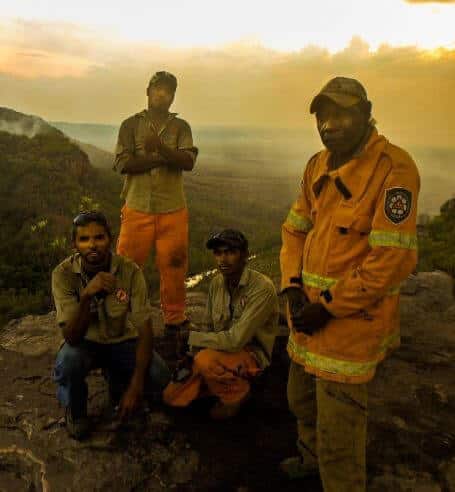Australia’s Top End is home to an industry with an estimated value of $59 million per annum. And it has nothing to do with digging anything up out of the ground.
The Australian indigenous carbon industry operates across 31 indigenous owned and run fire abatement projects. Spanning Cape York across the NT to the Kimberley, these projects cover 18 million hectares of the tropical savanna of northern Australia, according to the Indigenous Carbon Industry Network.
The concept is much the same as frameworks like REDD+ (Reducing Emissions from Deforestation and Degradation). By implementing cool burns in the appropriate seasons, indigenous organisations reduce the emissions from destructive bushfires during the dry season and increase biodiversity and biomass on savanna country.
Estimates are that these projects abate around 1.2 million tonnes of carbon per year. These are then sold to producers that need to offset their emissions, providing income for hundreds of indigenous land managers to stay on country.
One of the original indigenous ranger groups is the Adjumarllarl Rangers, who have been operating for more than 30 years in Western Arnhem Land. They were one of the founders of the Western Arnhem Land Fire Abatement (WALFA) project, which began way back in 2006 as a partnership with the Northern Land Council, the Darwin Centre for Bushfires Research and oil and gas multinational ConocoPhillips. It is estimated to have offset 900,000 tonnes of carbon so far.

“Adjumarllarl delivered a comprehensive program of backburning and firebreaks,” says the organisation. “This incorporated: all accessible tracks and roads, including the network of hunting and fishing tracks that criss-cross the outskirts of Gunbalanya; along natural barriers such as creeks and rivers; at and around cultural heritage sites and along the stone country escarpment edges.”

Indigenous landscape management isn’t going to make a major dent in climate change. Australia’s cars alone emit 44 times more carbon than what these land management projects offset.
On the other hand, these projects are essential for restoring degraded ecosystems and building ecological resilience on a warming planet. They also provide a welcome boost to indigenous employment and self-governance in the Top End.
Sign Up To Our Free Newsletter